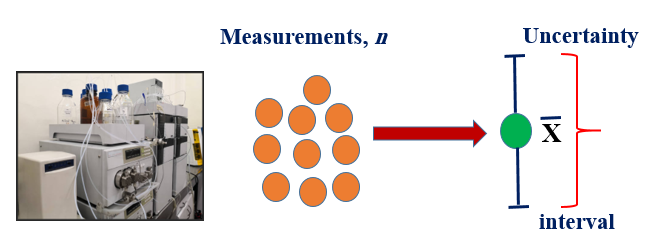JOURNAL 2996
Records of Agricultural and Food Chemistry
Year: 2024 Issue: 3 Special Issue: Abstracts 3rd. TCS, International Food Chemistry Congress February 29-March 03,2024 Antalya Türkiye
p.1 - 1
Viewed 1463 times.
GRAPHICAL ABSTRACT

ABSTRACT
Food analysis holds the key to understanding food composition, safety and quality. Uncertainty is an inherent companion to any analytical endeavor starting from sample preparation to instrument calibration and measurement. Understanding uncertainty is critical to ensuring reliable results that support critical decisions about food production, regulation, and consumer health. The sources of uncertainty in food analysis are diverse, including the type of food matrix, competence of the analyzer, accuracy of the equipment, reference materials and the repeatability of measurement. The consequences of ignoring uncertainty estimation i.e. inaccurate results can lead to mislabeling of food products, posing health risks to consumers with allergies or intolerances. Regulatory compliance becomes a gamble, as producers face financial losses or even legal repercussions due to inaccurate analyses. The comparability of research results is affected when uncertainty is not properly taken into account, which hinders scientific progress and innovation in the food sector. Therefore, a rigorous approach to uncertainty estimation is crucial. International standards and guidelines provide frameworks for quantification and reporting of uncertainty in food analysis particularly ISO GUM and EURACHEM/CITAC Guide. These standards rely on statistical methods to estimate precision (repeatability of measurements) and bias (systematic deviations from the true value) as Type A and Type B. By expressing the uncertainty as a confidence interval, we acknowledge the inherent limitations of our measurements and provide a clear picture of the range within which the true value is likely to lie. By recognizing the inherent variability in food analysis, we can make informed decisions, build confidence in our food systems, and ultimately contribute to a safer and more informed food future.
KEYWORDS- Food sample
- uncertainty estimation
- safety limits
- compliance